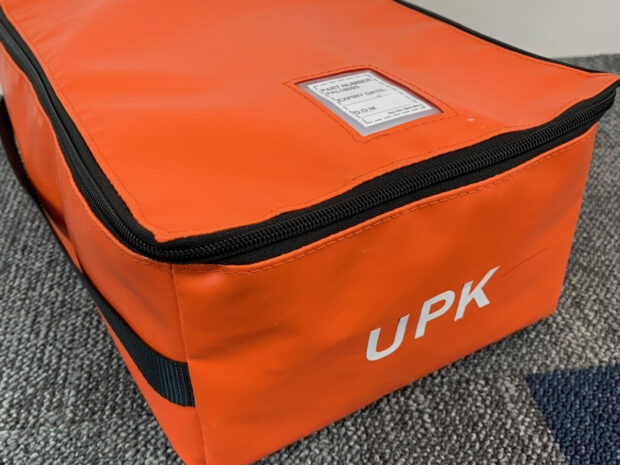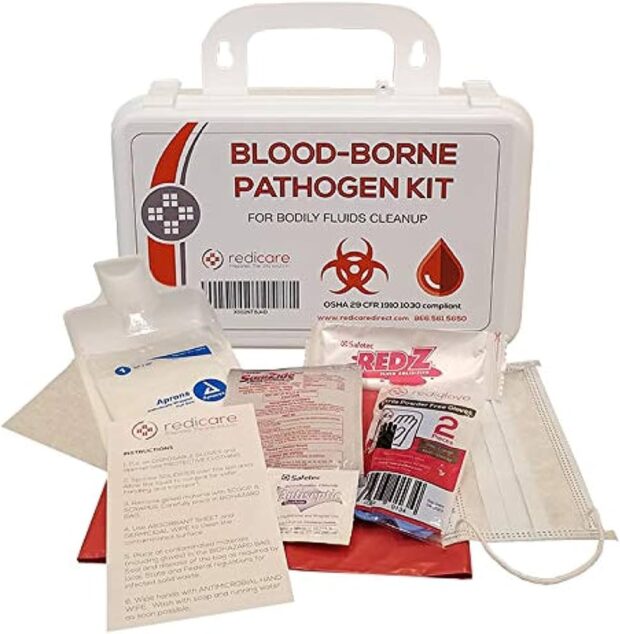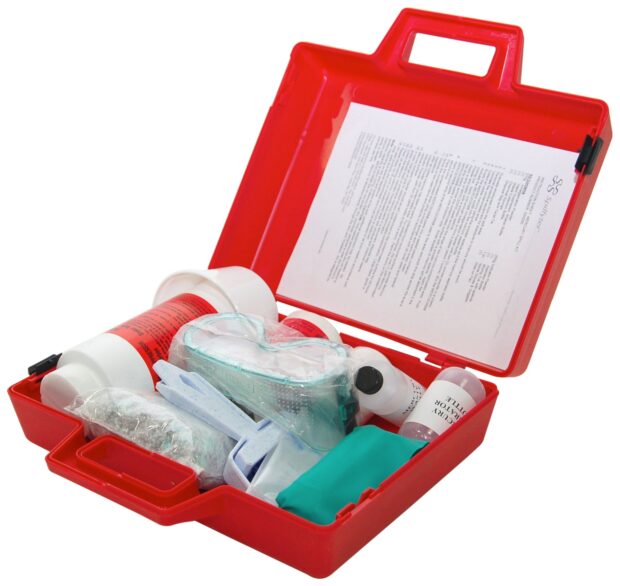Biohazardous spills can occur in various settings, including laboratories, healthcare facilities, industrial plants, and even public spaces. Responding promptly and effectively to such spills is critical to minimizing the risk of exposure to hazardous materials and protecting the health and safety of individuals in the vicinity.
Biohazard response spill kits are specially designed to contain and clean up biohazardous materials, ensuring a swift and safe response to spills. Let’s explore the different types of a biohazard response spill kit available and their key features.
Universal Precaution Kits

- Purpose: Universal precaution kits are designed to handle a wide range of biohazardous materials and spills, including blood, bodily fluids, and other potentially infectious substances.
- Components: These kits typically contain personal protective equipment (PPE) such as gloves, face masks, goggles, and disposable gowns, as well as absorbent materials, disinfectants, and biohazard disposal bags.
- Applications: Universal precaution kits are suitable for use in healthcare facilities, laboratories, emergency response situations, and any environment where there is a risk of exposure to biohazardous materials.
Chemical Spill Kits
- Purpose: Chemical spill kits are specifically designed to handle spills involving hazardous chemicals, including corrosive, toxic, or flammable substances.
- Components: These kits often include chemical-resistant gloves, goggles, face shields, absorbent pads or pillows, neutralizing agents, and spill containment barriers.
- Applications: Chemical spill kits are essential in laboratories, manufacturing plants, industrial facilities, and other settings where hazardous chemicals are used or stored.
Bloodborne Pathogen Kits

- Purpose: Kits for bloodborne pathogens are designed to deal with spills that involve blood or other potentially infectious materials (OPIM), such as vaginal fluids, saliva, or semen.
- Components: These kits typically include PPE such as gloves, face masks, goggles, and disposable gowns, as well as absorbent materials, disinfectants, and biohazard disposal bags.
- Applications: In emergency response teams, hospitals, and any other situation where there’s a chance of coming into contact with bloodborne pathogens, bloodborne pathogen kits are a need.
Spill Clean-Up Kits for Pharmaceuticals
- Purpose: Spill clean-up kits for pharmaceuticals are designed to handle spills involving medications, drugs, or other pharmaceutical products.
- Components: These kits may include gloves, face masks, absorbent pads or pillows, spill containment barriers, and specialized cleaning agents for pharmaceutical residues.
- Applications: These kits are commonly used in pharmacies, healthcare facilities, research laboratories, and pharmaceutical manufacturing plants.
Mercury Spill Kits

- Purpose: Mercury spill kits are specifically designed to safely contain and clean up spills involving elemental mercury, which can pose serious health risks if not handled properly.
- Components: These kits typically include mercury-absorbent powder, gloves, goggles, face masks, specialized containers for mercury collection, and instructions for safe disposal.
- Applications: Mercury spill kits are essential in facilities where mercury-containing equipment or products are used or stored, such as laboratories, hospitals, and dental clinics.
Conclusion
Biohazard response spill kits are essential resources for ensuring a prompt and effective response to spills of hazardous materials. By understanding the different types of spill kits available and their respective components and applications, organizations can better prepare for potential biohazard incidents and protect the health and safety of individuals in the workplace. Investing in the appropriate spill kits and providing comprehensive training on their use can mitigate risks, minimize exposure to hazardous materials, and promote a culture of safety and preparedness.




